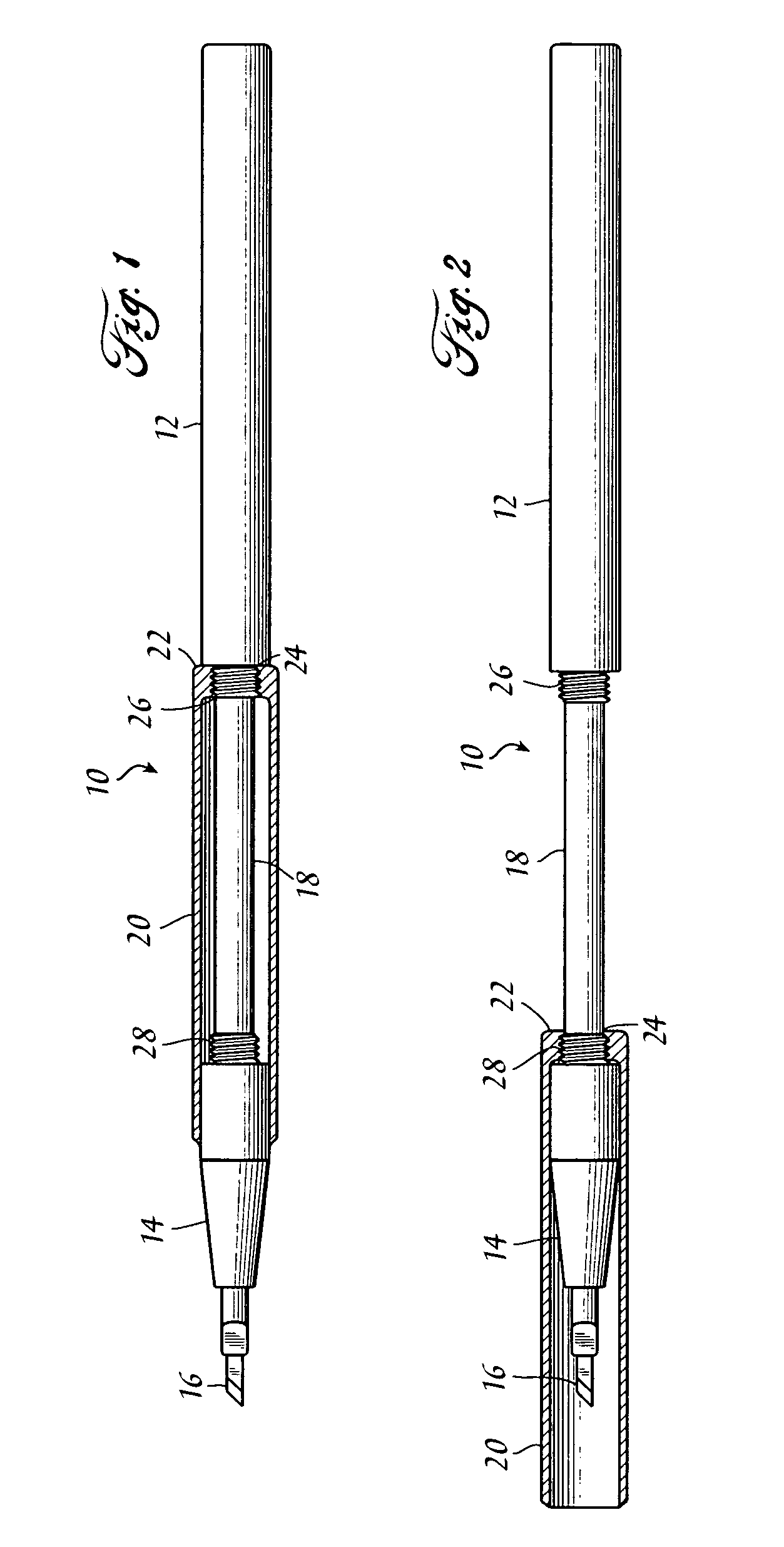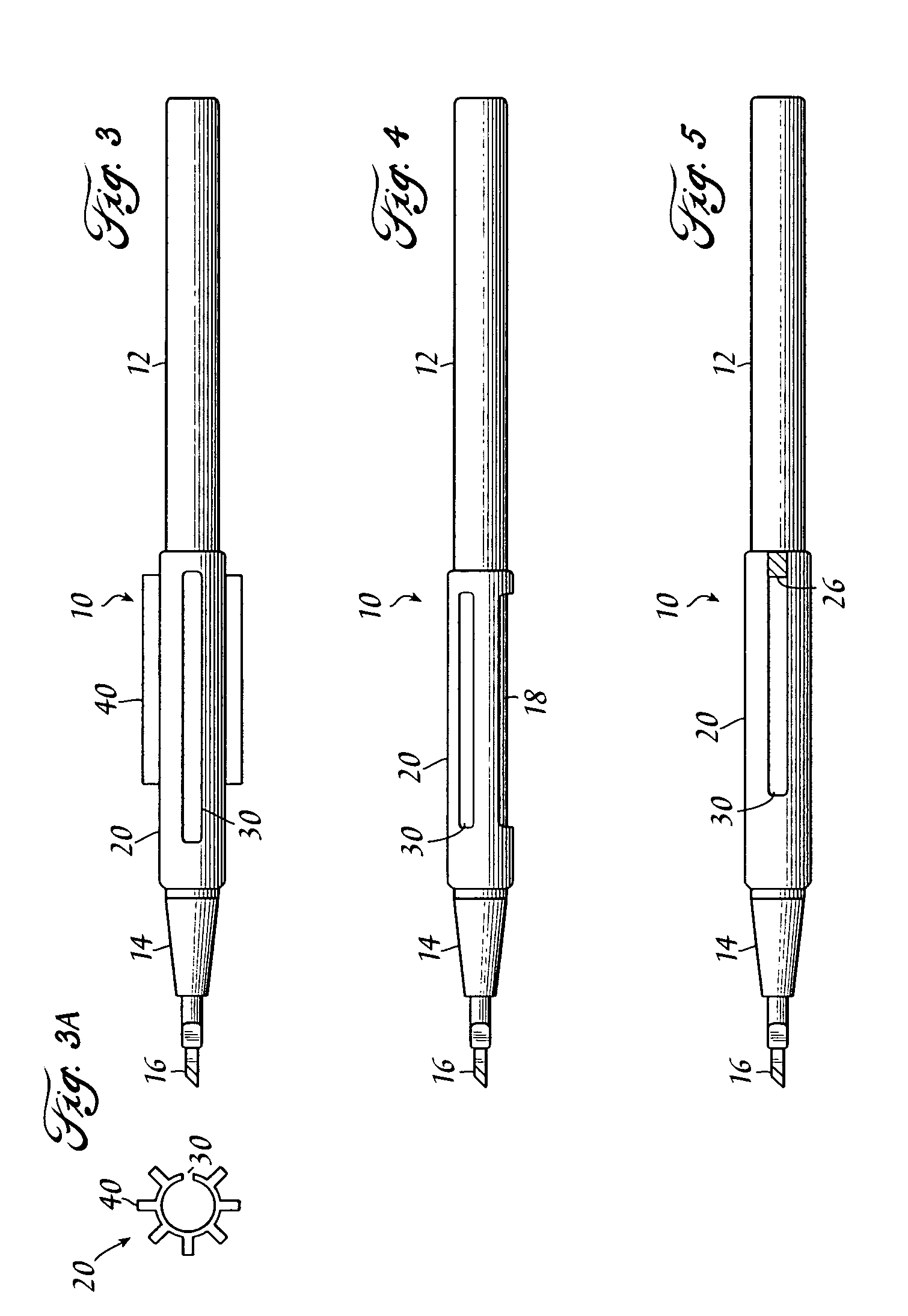Protection system for surgical instruments
a technology for surgical instruments and guards, applied in the field of surgical instruments, can solve the problems of inconvenient operation, and inability to protect surgical instruments, and achieve the effect of limited torque on the guard
- Summary
- Abstract
- Description
- Claims
- Application Information
AI Technical Summary
Benefits of technology
Problems solved by technology
Method used
Image
Examples
Embodiment Construction
[0029]Refer now to the drawings, wherein the depicted elements are not necessarily shown to scale and wherein like or similar elements are designated by the same reference numeral through the several views.
[0030]Referring now to FIG. 1, a preferred embodiment of the present invention is shown incorporated on a surgical instrument. FIG. 1 is a partial cross-sectional view of the attached, movable protector or guard 20. Again, as mentioned above, many reusable surgical instruments include at least one generally cylindrical handle with a distal end that houses a sharp or delicate instrument. Surgical knives, as more fully described below in accordance with preferred embodiments of the present invention, are typical of such reusable surgical instruments. Although a surgical knife is illustrated in this specification, those skilled in the art will readily appreciate that the instant invention applies equally to all sharp or delicate instruments, all falling within this invention.
[0031]In...
PUM
 Login to View More
Login to View More Abstract
Description
Claims
Application Information
 Login to View More
Login to View More - R&D
- Intellectual Property
- Life Sciences
- Materials
- Tech Scout
- Unparalleled Data Quality
- Higher Quality Content
- 60% Fewer Hallucinations
Browse by: Latest US Patents, China's latest patents, Technical Efficacy Thesaurus, Application Domain, Technology Topic, Popular Technical Reports.
© 2025 PatSnap. All rights reserved.Legal|Privacy policy|Modern Slavery Act Transparency Statement|Sitemap|About US| Contact US: help@patsnap.com



